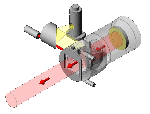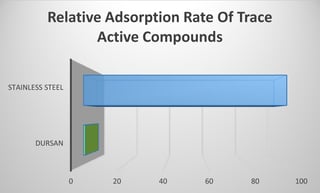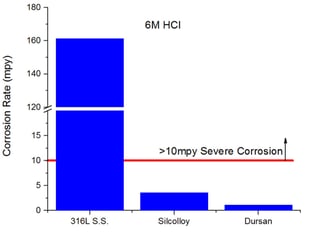 *
*
Fourier Transform Infrared spectroscopy (FTIR) is a potentially useful tool in emissions monitoring, analytical, and process control applications. Making FTIR better is where SilcoTek comes into the picture. SilcoTek's inert Dursan® coating helps FTIR achieve outstanding precision, accuracy, and durability by eliminating adsorption and corrosion in the instrument body.
Read about how our coatings improve performance.

About FTIR
FTIR is a near real time spectral device used to identify a broad spectrum of both organic and inorganic materials and compounds. A basic FTIR system consists of an infrared (IR) energy source, mirrors, detector, and body. The IR beam is directed toward the sample which absorbs IR energy at various wavelengths. A detector will capture IR energy not absorbed by the sample. Data is sent to the processor which determines adsorption for each wavelength in the IR spectrum. Organic and inorganic material is then identified by the spectrum signature.
FTIR advantages
- Reduced maintenance compared to traditional CEMS
- Less calibration.
- No drift
- Multiple compound detection
- Detect organic and inorganic compounds
- High accuracy and precision
- High speed, near real time detection
Disadvantages
- Complex computing required to determine material spectrum and detection signature.
- Lack of definitive method for determining detection limits. EPA method 320 and ASTM D6348-13 are leading methods.
- Moisture, CO2 and other IR absorbing gases can alter results.
- Sample adsorption in the system body can negatively impact detection and accuracy.

How Dursan® helps FTIR systems
Dursan® prevents adsorption of active and reactive samples within the FTIR body, improving system detection and accuracy. Sample adsorption can be a significant factor in calibration errors, sample loss, and substandard performance in all analytical systems, including FTIR. Studies show adsorption rate of trace active compounds is significantly higher for stainless steel compared to coated surfaces.

Dursan® also improves corrosion resistance of the body by 10x or more; preventing system failure due to corrosion damage and preventing contamination/adosrption of the sample by rust particles. Dursan® acts as an inert barrier, preventing interaction between the instrument surface and the sample.

If you're interested in learning more about FTIR systems, here's a whitepaper that thoroughly examines FTIR benefits, problems, and operation.

*Image credit www.gascell.com
 *
*




